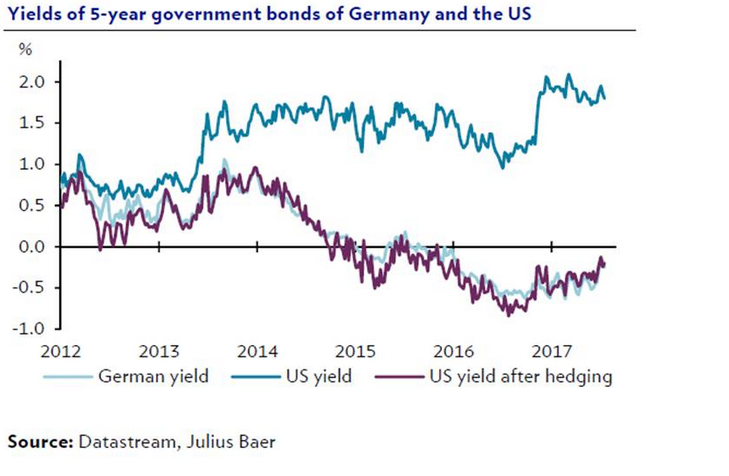The chart by Julius Baer’s analysts below compares the yields on German 5-year government bonds with those of the US. They think it is comforting to see that the bond market is efficient. In other words, for German bond investors it is basically the same for them whether they invest in negative- yielding German Bunds or buy US bonds and pay for the hedging of the currency risk.
Indeed, the hedging costs should equal the interest-rate differential with some adjustments for the difference in the capital costs for US and European banks.
The chart, however, leaves open the question whether the German yields are following in the footsteps of the American ones, or vice versa. This question becomes even more important as the European Central Bank (ECB) and the US Federal Reserve (Fed) seem to move in opposing directions. The ECB President Mario Draghi has repeated his stance that monetary conditions need to remain accommodative (yields need to remain low) to ensure the reflation of the eurozone economy. Meanwhile, the Fed is supposedly arguing for a reduction of its balance sheet in addition to the planned rate hikes.
We understand that the Fed would welcome higher yields as a sign that the bond market shares its optimistic outlook for stable growth and higher inflation. The de facto linkage of the bond yields opens room for conflict for the two central banks – conflict potential for which the current, low level of government bond yields does not offer sufficient compensation.






